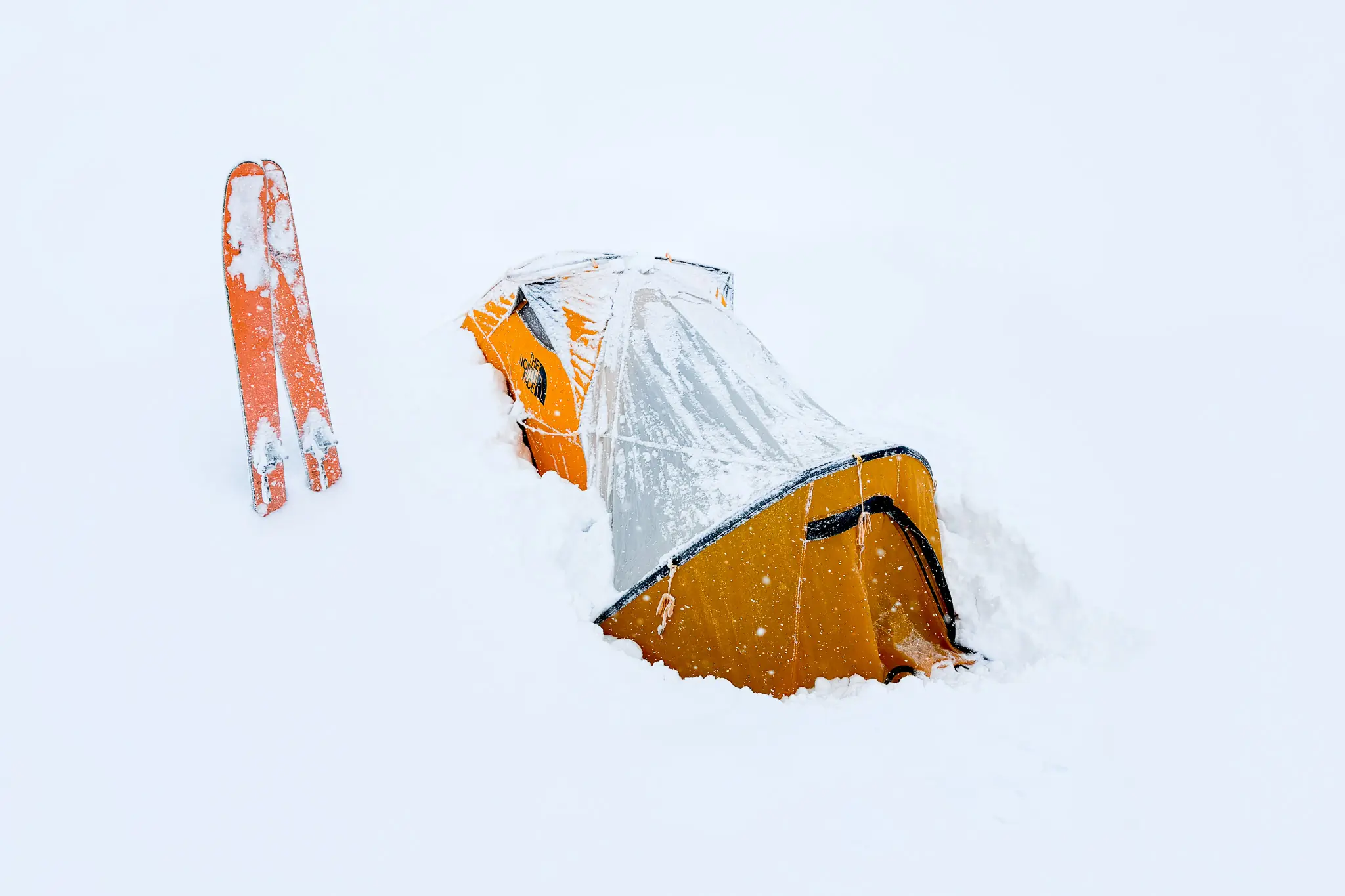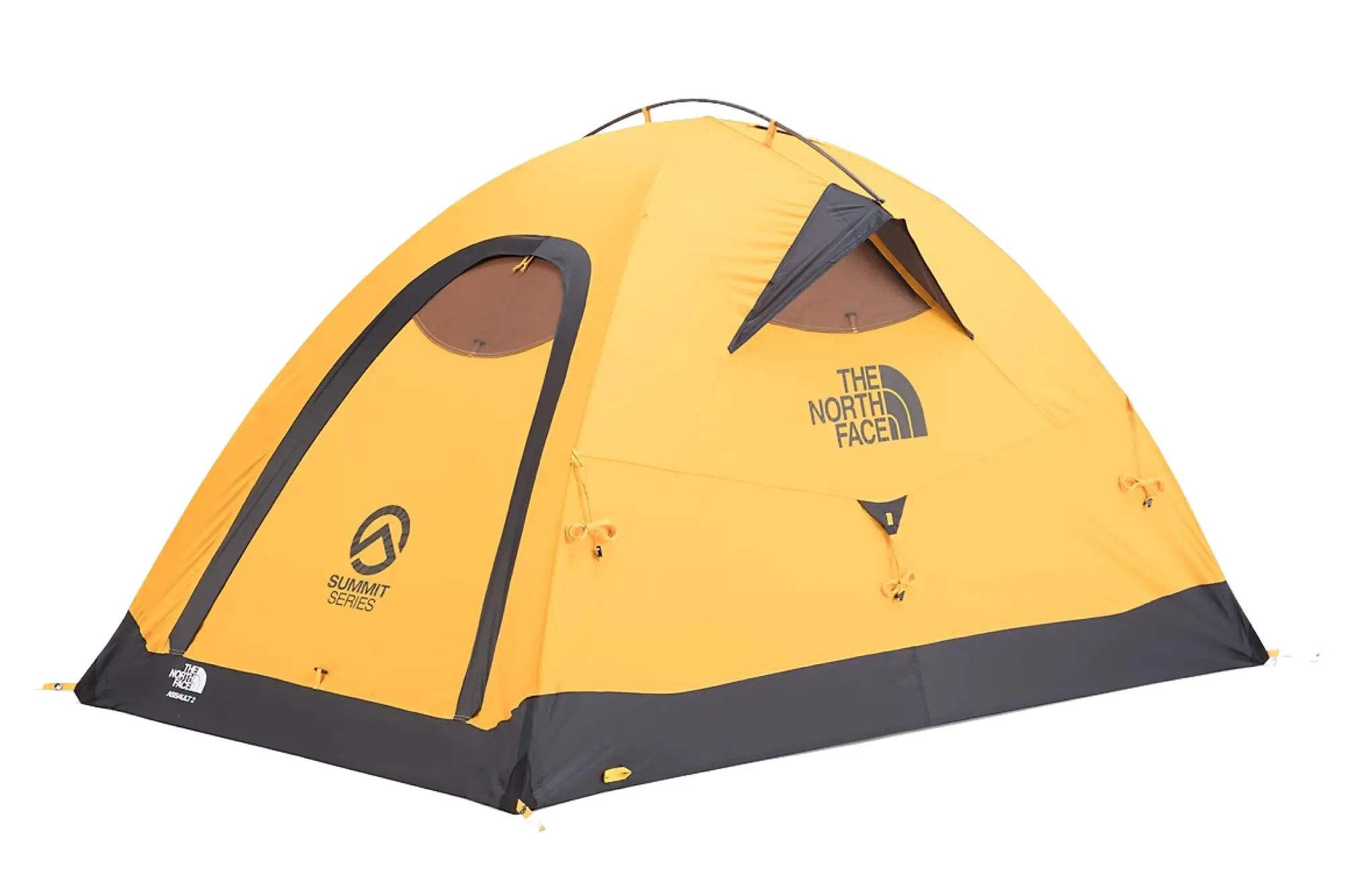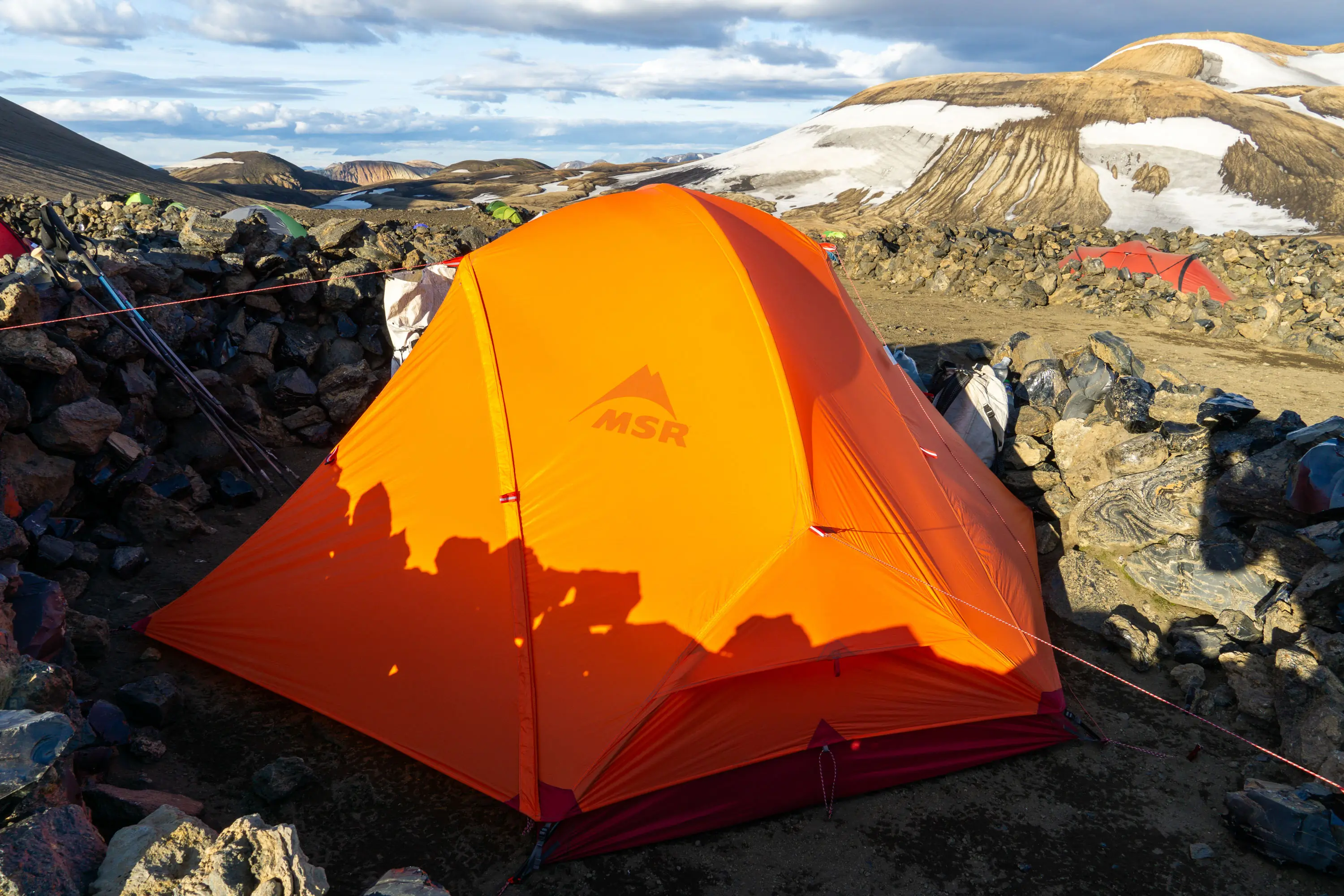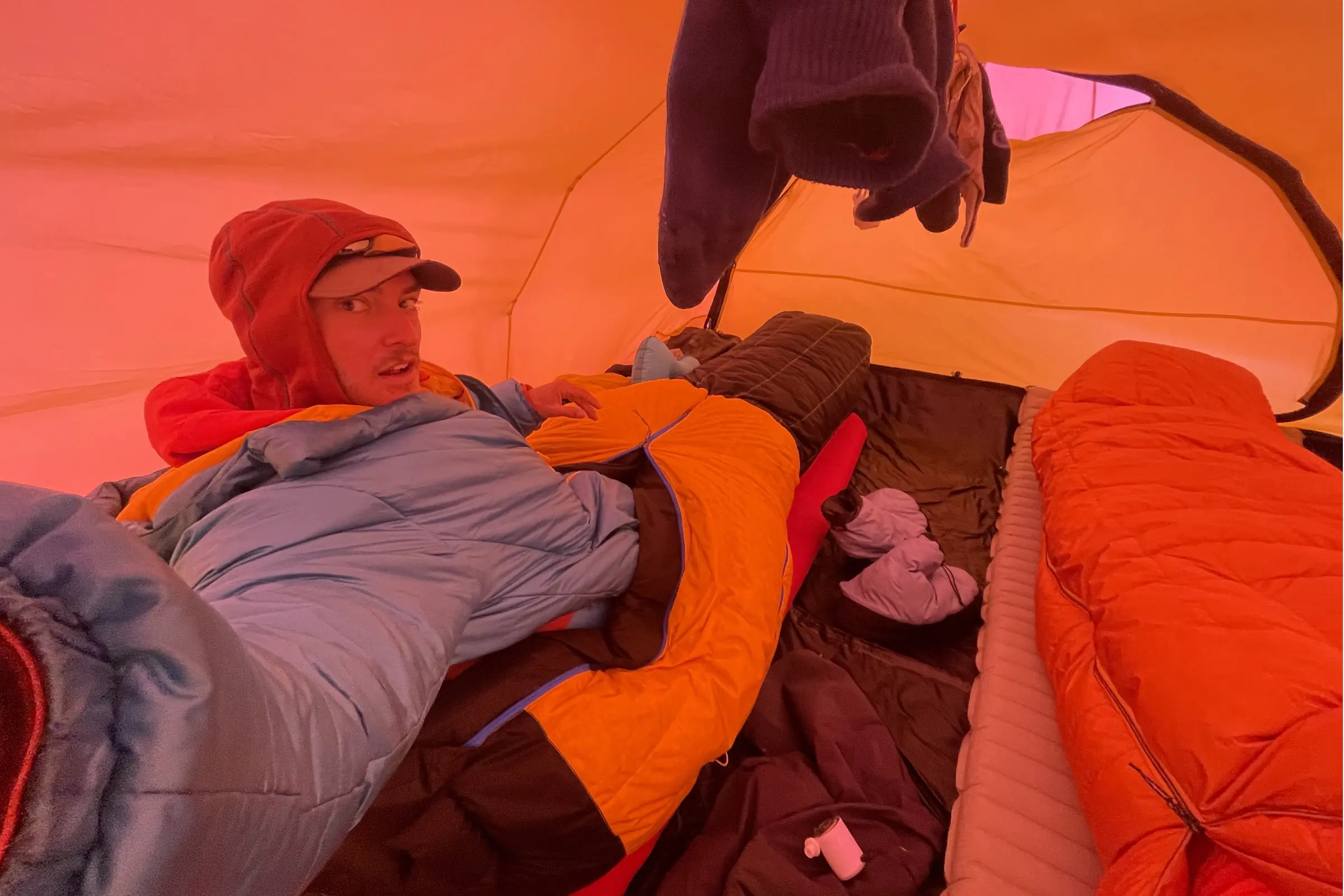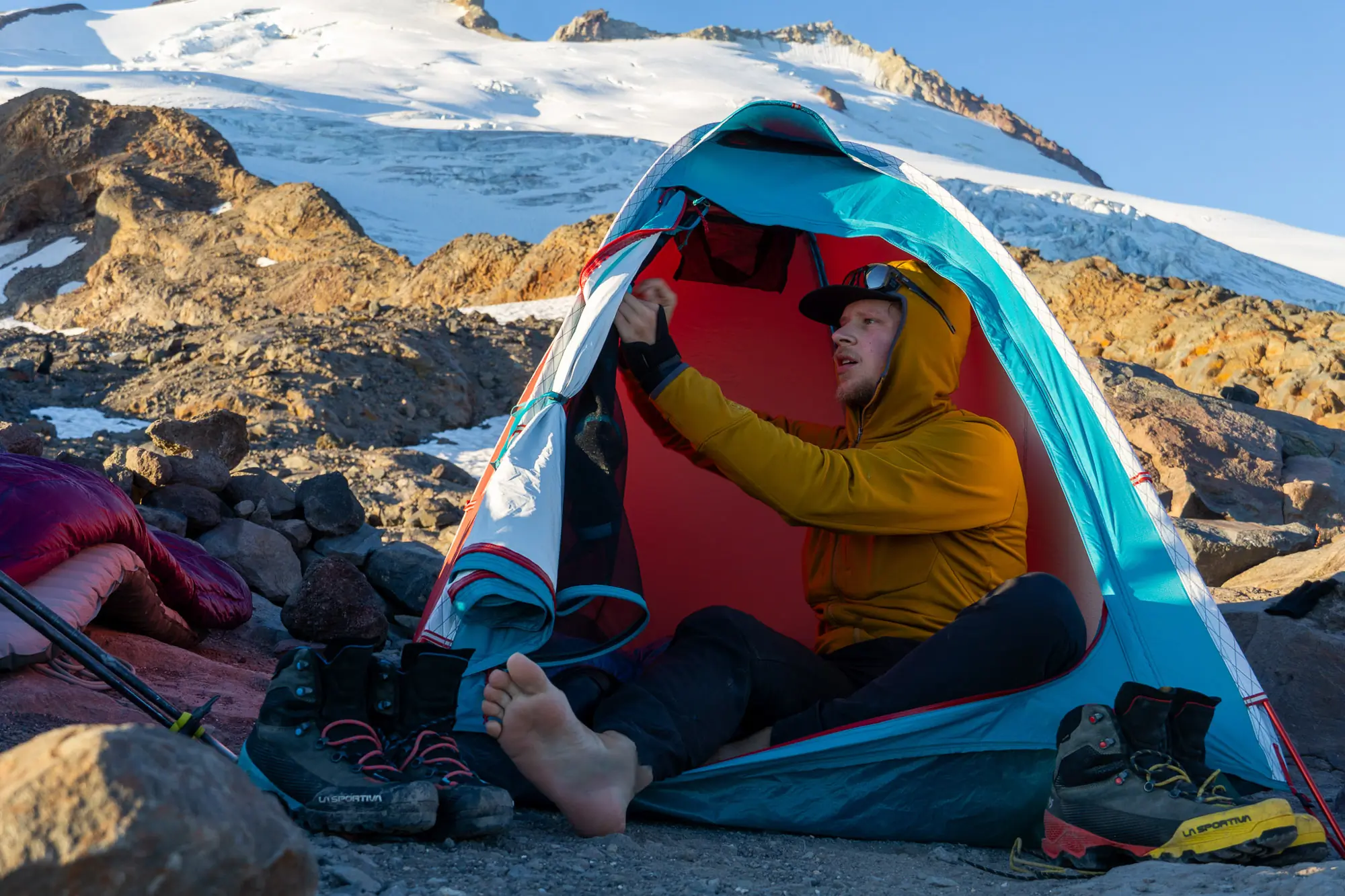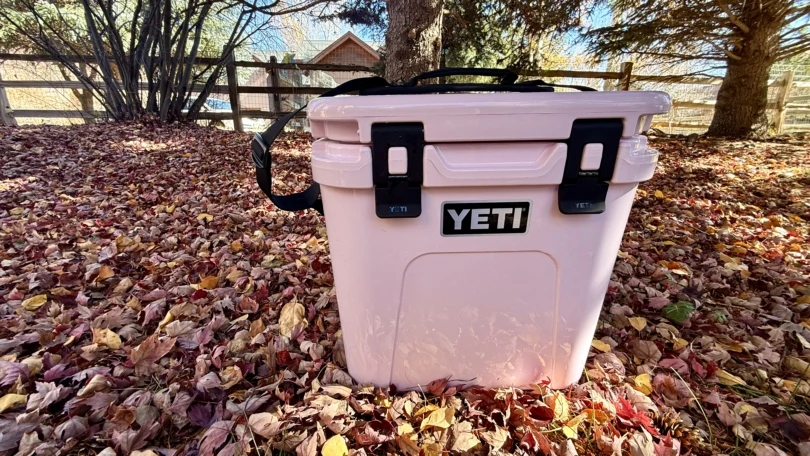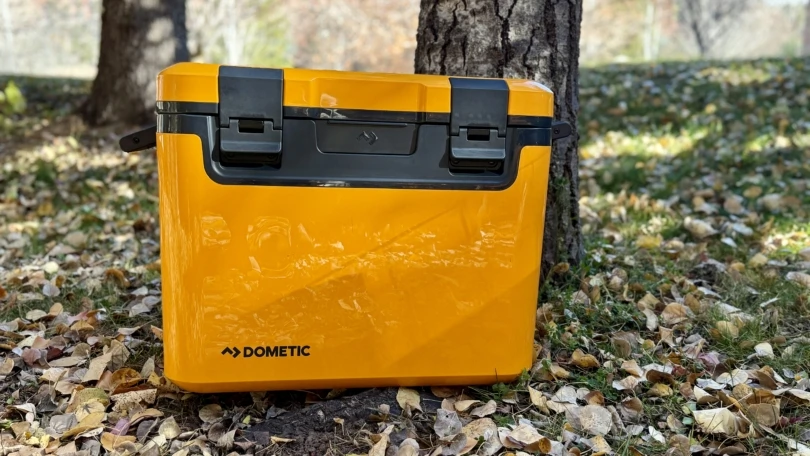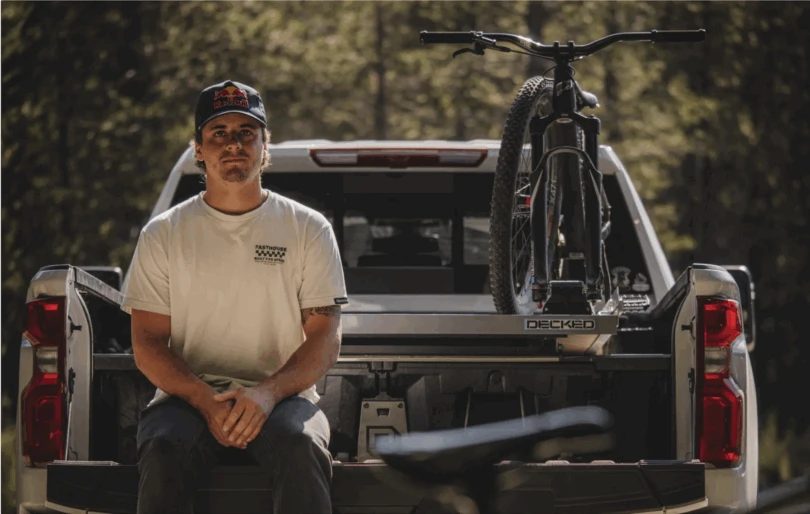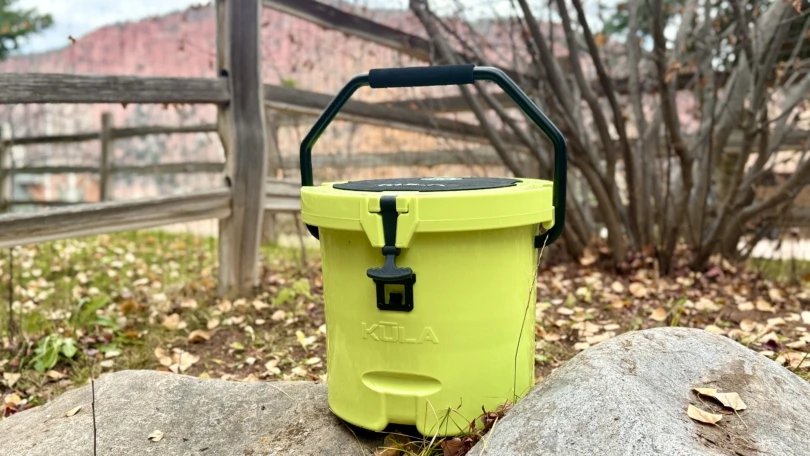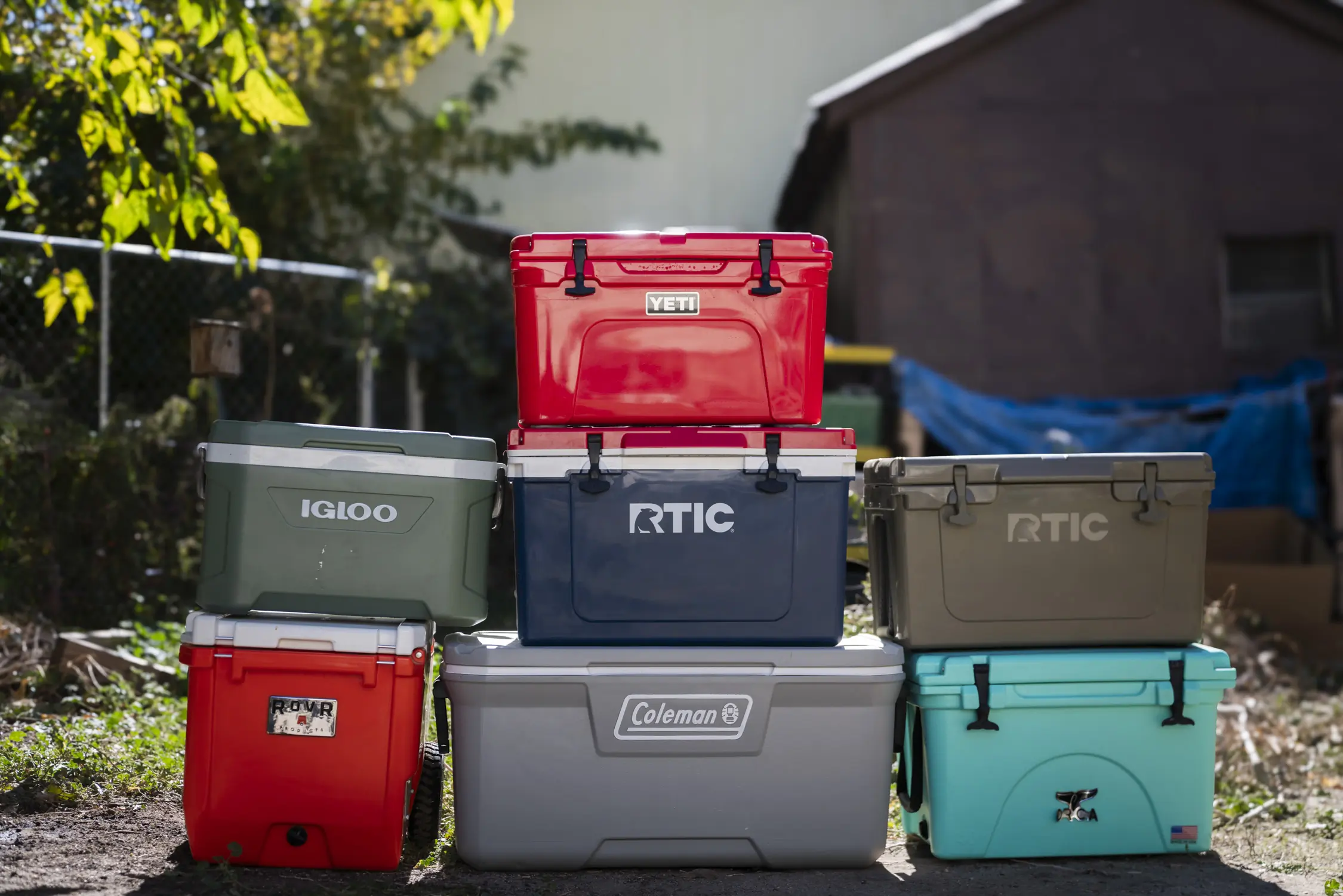Once again, I woke and swept my hand across the ceiling of the Assault 2, pushing the heavy snow off the tent. Winds battered the walls, and snow fell ferociously. Concerned about how the nearby cook tent was doing, I forced myself out of my sleeping bag and shuffled to put my boots on in the vestibule.
I found myself waist-deep the first step I took outside. Looking back at my bivy shelter, I couldn’t help but shoot a photo — the tent was nearly buried! Shoveling out tents is an hourly chore in the North Cascades at the peak of winter, and similar to the week-long storms that rage through the great ranges, Artist Point, where we had established our base camp, is well-known for holding world-record amounts of snowfall.
This makes the Mt. Baker area in winter the perfect place to test ourselves and gear for the biggest mountains in the world — which is exactly why I was here, preparing future West Buttress climbers for Denali ascents.
Having guided Denali and climbed in the Alaska Range, guided and climbed peaks all throughout the Cascades, and climbed all over the Canadian Rockies and Sierras through every season, I’ve seen and experienced the intricacies and limits of four-season tents. These winter mountaineering courses have a history of being where lesser equipment goes to die — but The North Face Assault 2 Tent stood strong through an entire week of torture.
In short: The North Face Assault 2 exists somewhere between a lightweight bivy tent and an expedition-style basecamp shelter, sporting features of both. This makes it one of the more versatile single-wall tents I’ve used extensively. It’s impressively breathable for a single-walled shelter and is modular and livable with a spacious and removable vestibule. I would feel comfortable using the Assault 2 on a large mountaineering route in the greater ranges or for a weekend ski tour.
To see how the North Face Assault 2 Tent stacks up against other mountaineering tents, check out GearJunkie’s Best 4-Season Tents Buyer’s Guide.
-
Weather Resistance
8.0
-
Living Space
7.0
-
Durability
7.0
-
Size & Weight
7.0
- Type: High-alpine mountaineering
- Weight: 5 lbs., 7 oz.
- Doors: 1.5
- Sleeps: 2
- Floor area: 26.7 sq. ft.
- Vestibule area: Unpublished
- Height: 42"
- Walls: Single
Pros
- Removable vestibule allows to strip weight while on route
- Tight footprint for setup on small ledges
- Easy to set up body with unique interior pole design
- Large vents and breathable fabric minimize condensation
Cons
- Finicky vestibule setup
- Vent construction causes snow to become trapped
- Heavy compared to true bivy-style tents
The North Face Assault 2 Tent: Review
First Impressions
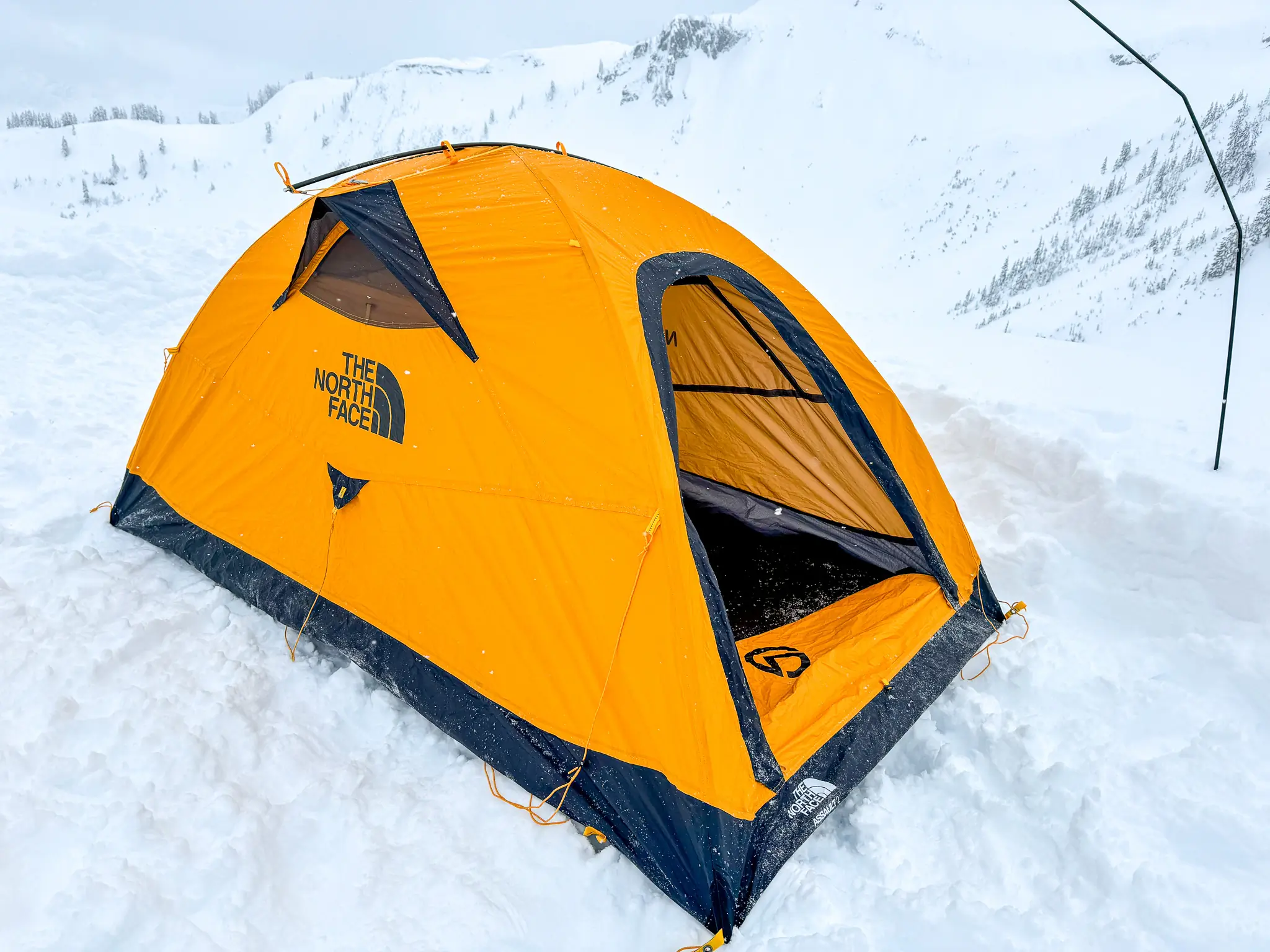
Climbing in the larger mountains, such as the Alaska Range, often requires a quiver of tents to stay comfortable in the harshest environments on the planet. Four-season mountaineering tents range from lightweight bivy shelters to heavy-duty expedition fortresses. What exactly are the differences, and where does Assault 2 lay on the spectrum?
Bivy tents are ideal on-route shelters, as their minimal weight and packability allow climbers to keep their packs light and small for pushing through pitch after pitch of technical steep rock and ice. They’re usually single-wall and as small as possible, sacrificing storage space, a vestibule, and breathability for minimal weight and a tight footprint.
These tents are ready to be pitched on the tightest and most exposed ledges. These tents are a critical part of an alpinist’s kit for multiday technical routes.
Basecamp or expedition-style tents, on the other hand, are designed to be livable for long periods of time and to keep you protected and comfortable through the most severe storms. Large vestibules for gear storage and cooking, heavy-duty poles, mesh vents with doors, and double walls provide day-to-day comfort through high winds and large amounts of precip, at the sacrifice of several extra pounds. These tents are perfect for serious mountaineering routes and long term base-camping.
The Assault 2, having some features of a basecamp tent and some of a bivy tent, strikes a medium between the two. This tent would work great for objectives that require greater protection and comfort than a true bivy tent, but where a heavy-duty basecamp tent would be overkill.
Assault 2 Designs and Features
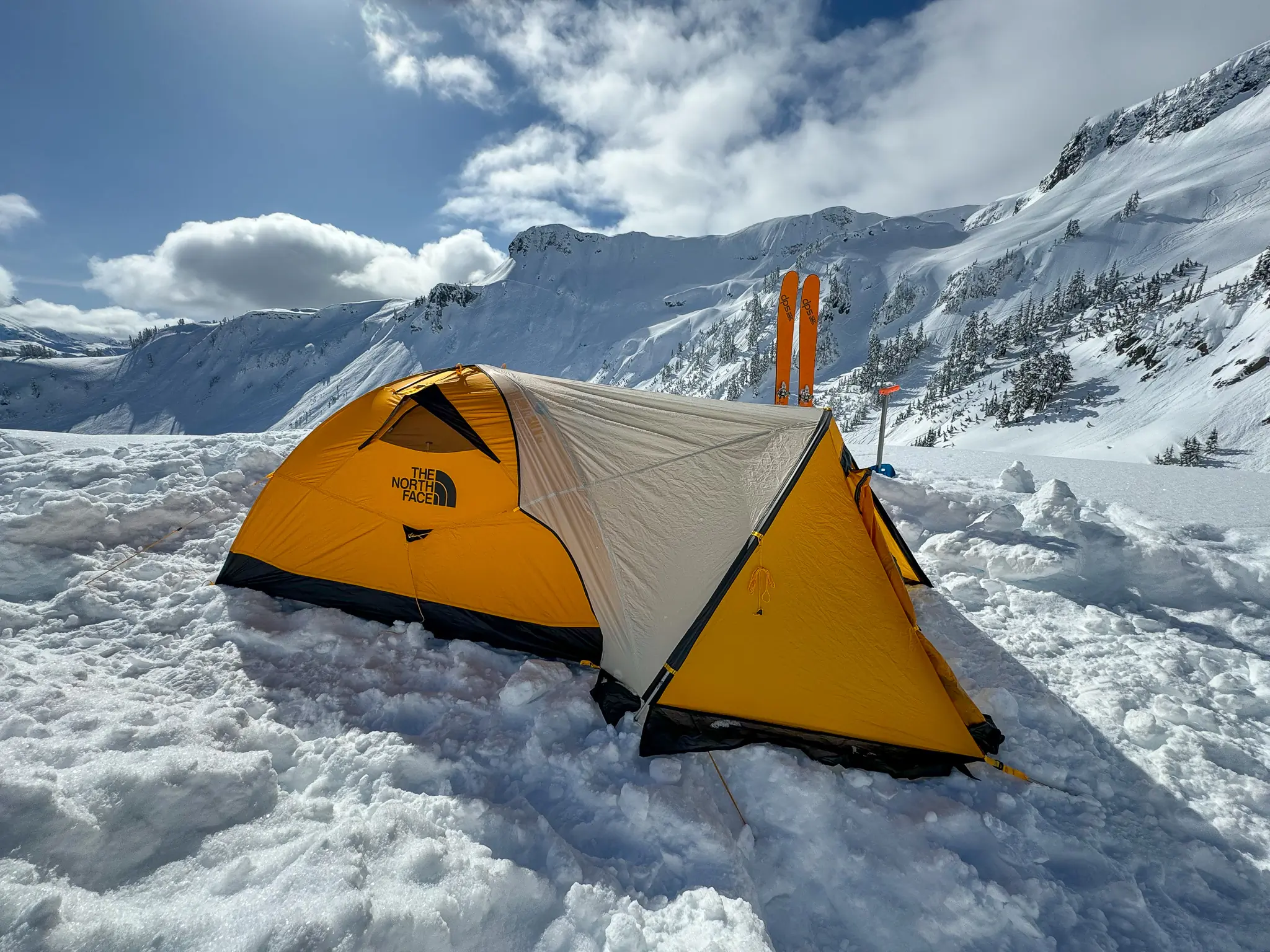



Skiing into the Mt. Baker backcountry for a week with an impending snowstorm, it crossed my mind how this would be no trivial task for our equipment.
For objectives ranging from the West Buttress of Denali to technical multiday routes and overnight ski traverses, mountain guides need our equipment to fulfill a long list of paradoxical needs. We need our tents to be lightweight and packable to carry them long distances, yet durable, comfortable, and spacious. Wind and water-proof, yet breathable for long-term hunkering down. The list goes on.
No tent fulfills all these contradictions perfectly, but the Assault 2 checks these boxes in such a way as to make a unique and versatile shelter, and after a week spent under fire, I came to understand the ins and outs of this tent pretty well.
Body Setup and Poles
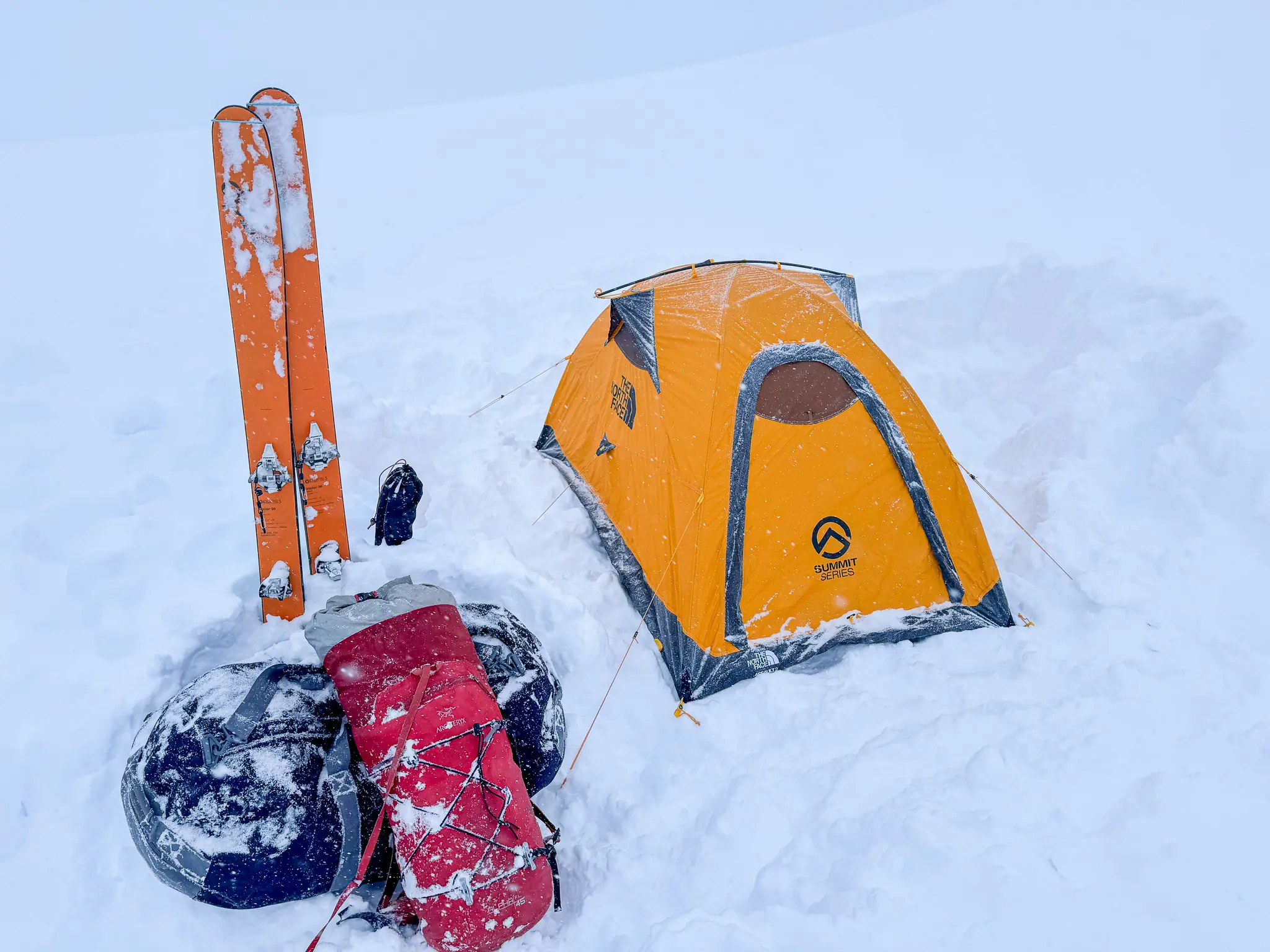



Breaking trail through heavy snow in whiteout conditions had been the theme of the day. The group was tired, yet the hard work really began once we arrived at camp. Work-hardening the bottomless powder to make platforms, securing and fortifying guyline anchors, and lots … lots of shoveling snow to set up a stormproof Denali-esque basecamp takes hours.
After securing my students’ tunnel-style basecamp tent and setting up and digging out the group cook tent, I moved to pitch my Assault 2. The carbon-fiber Easton Syclone poles are effortless to place into the inside corners, and even though it was snowing sideways with strong gusts of wind, the absence of pole sleeves made the effort far easier. The cross pole design, with its creative and simple features, enables quick setup of the tent body and allows it to stand independently.
Although the setup is easy enough, there is room for improvement. Connecting the two interior poles together with a hub would prevent the possibility of dropping a pole during setup on an exposed ledge. The shorter cross pole system could also benefit from a symmetric design, taking out an extra moment of thought and improving consistency throughout the tent. As always, lightweight gear is at the sacrifice of durability. Be gentle with these featherlight carbon poles!
Vestibule




If you have ever tried camping through a snowstorm without a vestibule, you know how challenging it is to keep your gear organized and dry. Some bivy tents, such as the MSR Advance Pro 2, don’t have a vestibule option at all, while others, such as the Mountain Hardwear AC 2 or the Black Diamond Firstlight, provide one as an additional purchase. The North Face’s inclusion of a vestibule makes for a standout and welcomed feature, greatly increasing the value of this shelter.
The additional space to store gear, boots, or cook increases the livability of the Assault 2 significantly, especially in comparison to other single-wall tents. This allows for many consecutive nights to be spent in the tent comfortably.
Being a removable component, the vestibule is optional. Choose to forgo the vestibule and strip weight for a summit push or to set up the tent in a tight spot. Although the removable vestibule stretches the versatility of the Assault 2, setting up the vestibule to be taut and well-sealed is finicky.
An additional fourth pole is used for the vestibule with a sleeve insert spanning over the door. Be careful inserting this pole to avoid poking a hole through the sleeve material.
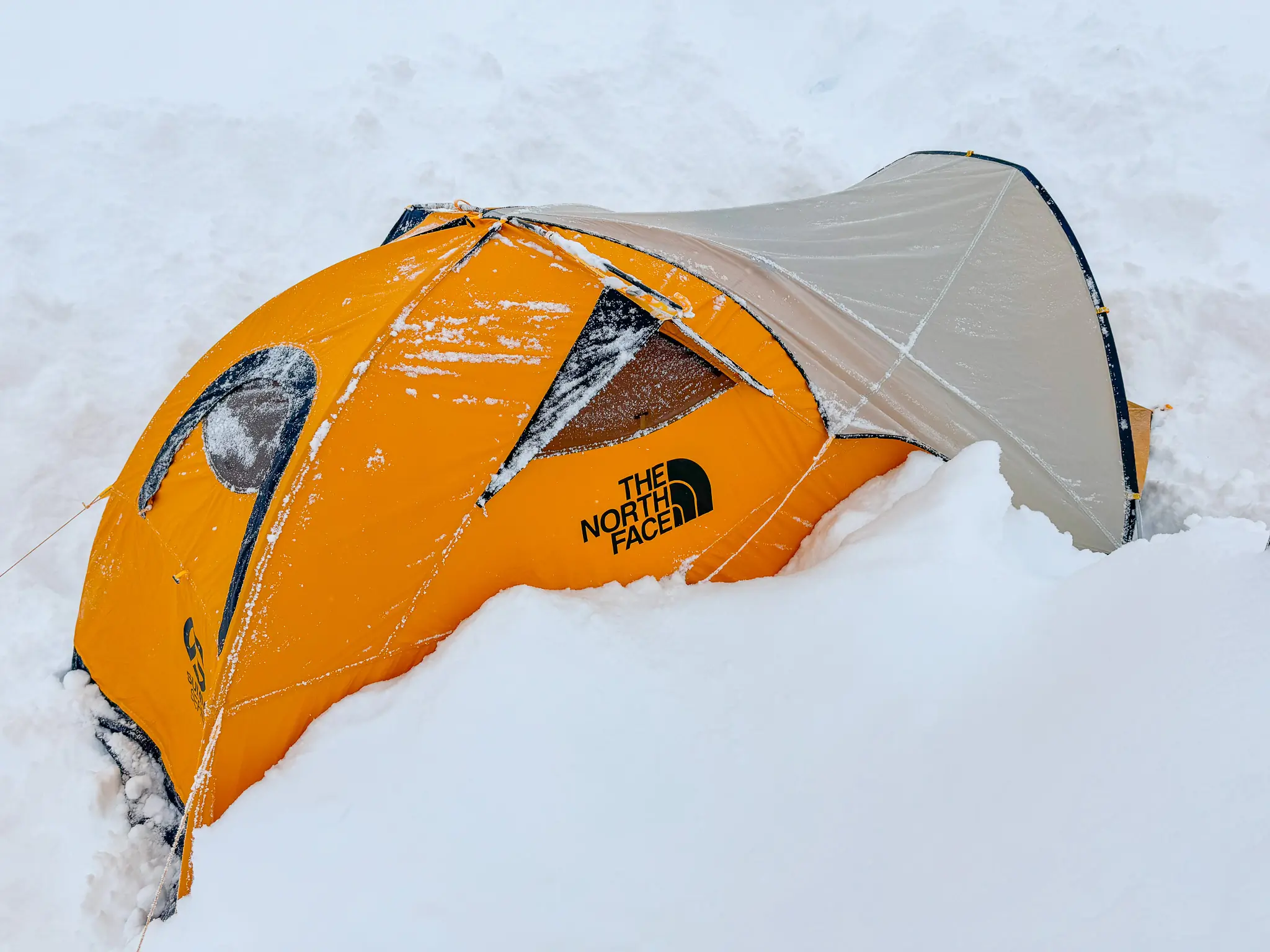



Performance and Functionality
Condensation is a common issue with single-wall tents, making them less comfortable and livable. However, they excel when weight and packability matter most. The fabric, vents, and shape strike a balance between weight and livability. By day 5 of the Denali prep course, minimal condensation in the form of tiny frost crystals had formed then evaporated and dried several times on the interior walls of the Assault 2.
Ventilation and FUTURELIGHT Fabric
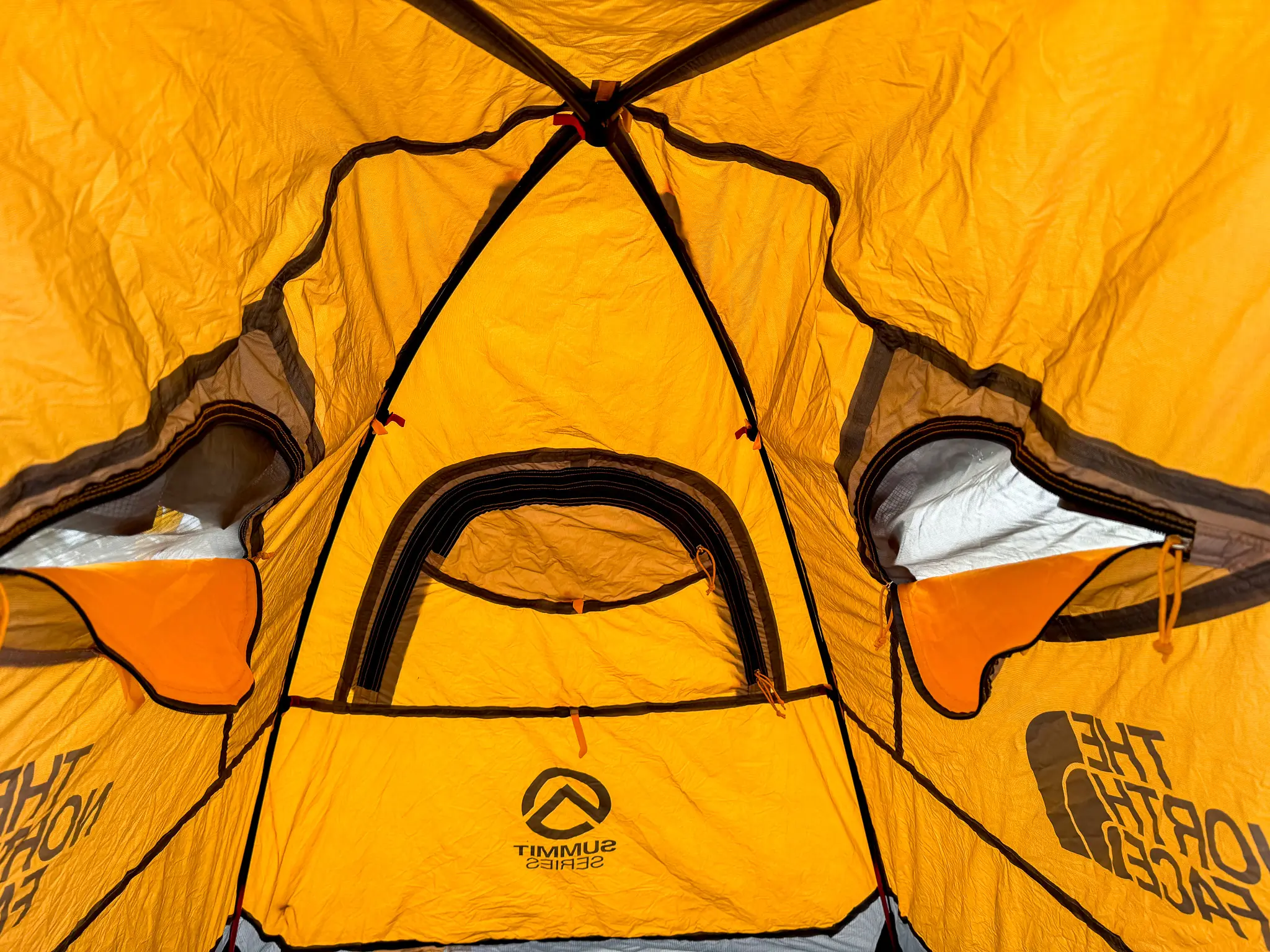



The Assault 2, with its two smaller vents on the sides and a third larger vent nearly the size of a door, is the best single-wall bivy tent I’ve seen for ventilation. This allows for quick drying of any condensation buildup.
Good ventilation, in combination with The North Face’s proprietary electrospun breathable-waterproof FUTURELIGHT fabric, helps to mitigate the development of the ubiquitous water drips that rain from the ceiling on most single-wall tents and persist for days.
The unique FUTURELIGHT fabric did its job and breathed well through feet of accumulated snowfall. Usually, when using a single-wall tent in the Cascades, I have to accept the fact that the inside of the tent will be damp, wetting my sleeping bag and anything that touches the walls. I was pleased to find my gear remained dry!
Although the vents significantly increase the comfort, a redesign of the smaller side vents is in order. The wind blows snow through the mesh and into the tent unless the vent door is closed. Then, with the vent door closed, snow will build up between the mesh and the vent door. Switching the order of the mesh and the solid vent door would solve this problem.
Weight and Packability
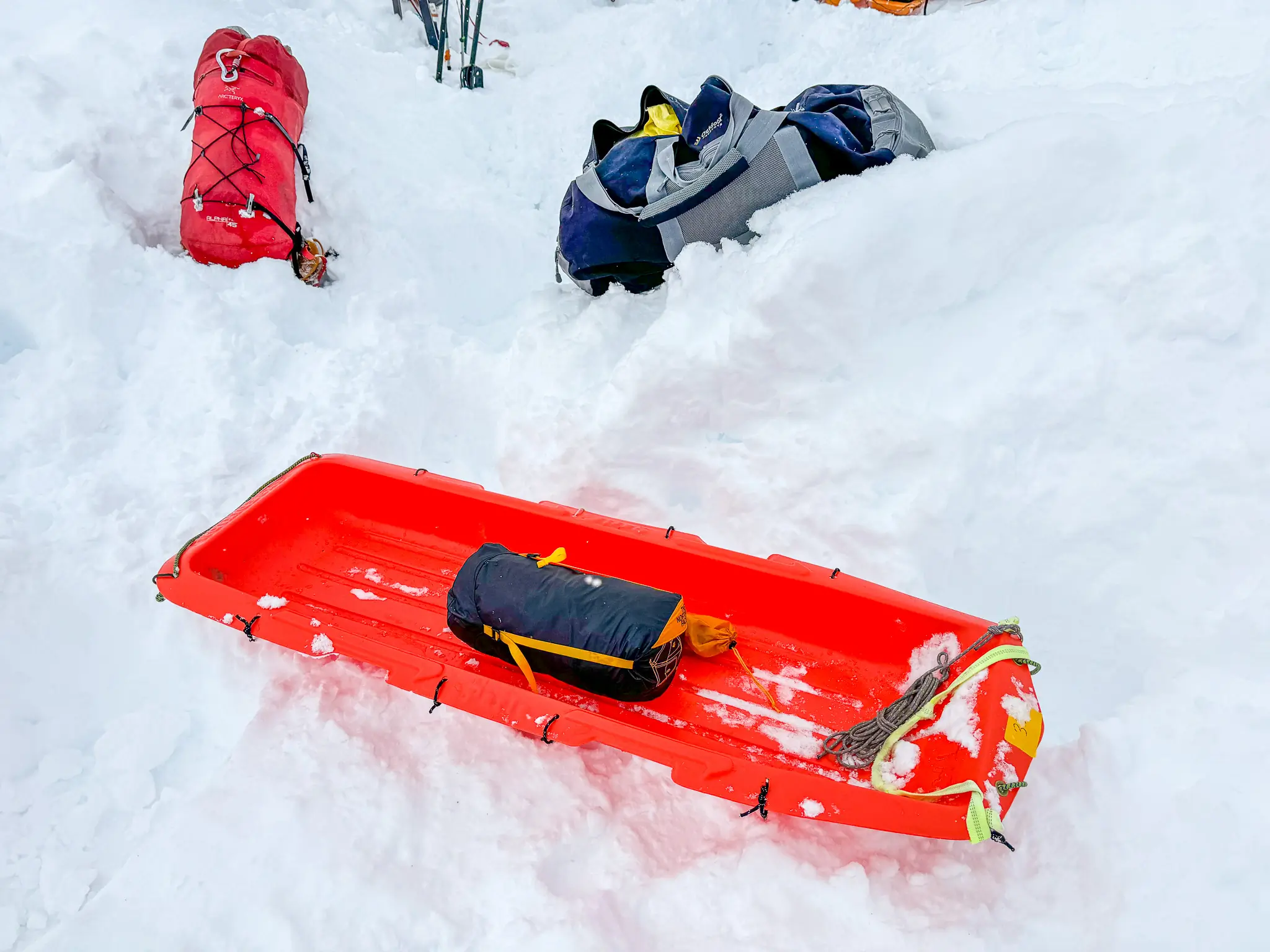



Weighing 5 pounds, 7 ounces, this shelter is significantly lighter and more packable than its larger basecamp-style tent counterparts; however, it’s on the heavier side for a true bivy tent. The Assault 2 reaches a minimum weight of 3 pounds, 12 ounces — still heavier than other bivy tents, yet the additional features make it more comfortable for extended use.
The MSR Advance Pro 2, a popular bivy tent, weighs 2 pounds, 14 ounces, and the Mountain Hardwear Trango 2, a popular basecamp tent, weighs 8 pounds, 9.7 ounces.
A quick word on the stuff sack that comes with the tent — the compression straps don’t work. I also ripped a large tear in the sack, rendering it useless. Thankfully, the stuff sack is only useful for storage, as packing these types of tents by stuffing them directly into your pack works best to maximize packability.
Room for Improvement
Although the Assault 2 pushes the boundaries of a single-wall tent, the nature of how it sits between a true bivy tent and a basecamp tent causes the Assault 2 to excel in neither category. Most climbers in the Alaska Range will take either both a bivy tent and a basecamp tent, or just a burly basecamp tent, depending on their objectives.
Taking only the Assault 2 would be reasonable for a quick smash-and-grab mission, but a longer trip would require a significant sacrifice in comfort. There are also lighter options for an on-route tent such as the Black Diamond Firstlight or the MSR Advance Pro 2, making these a better choice (objective depending) if taking two tents.
The North Face Assault 2 FUTURELIGHT Tent: Conclusion
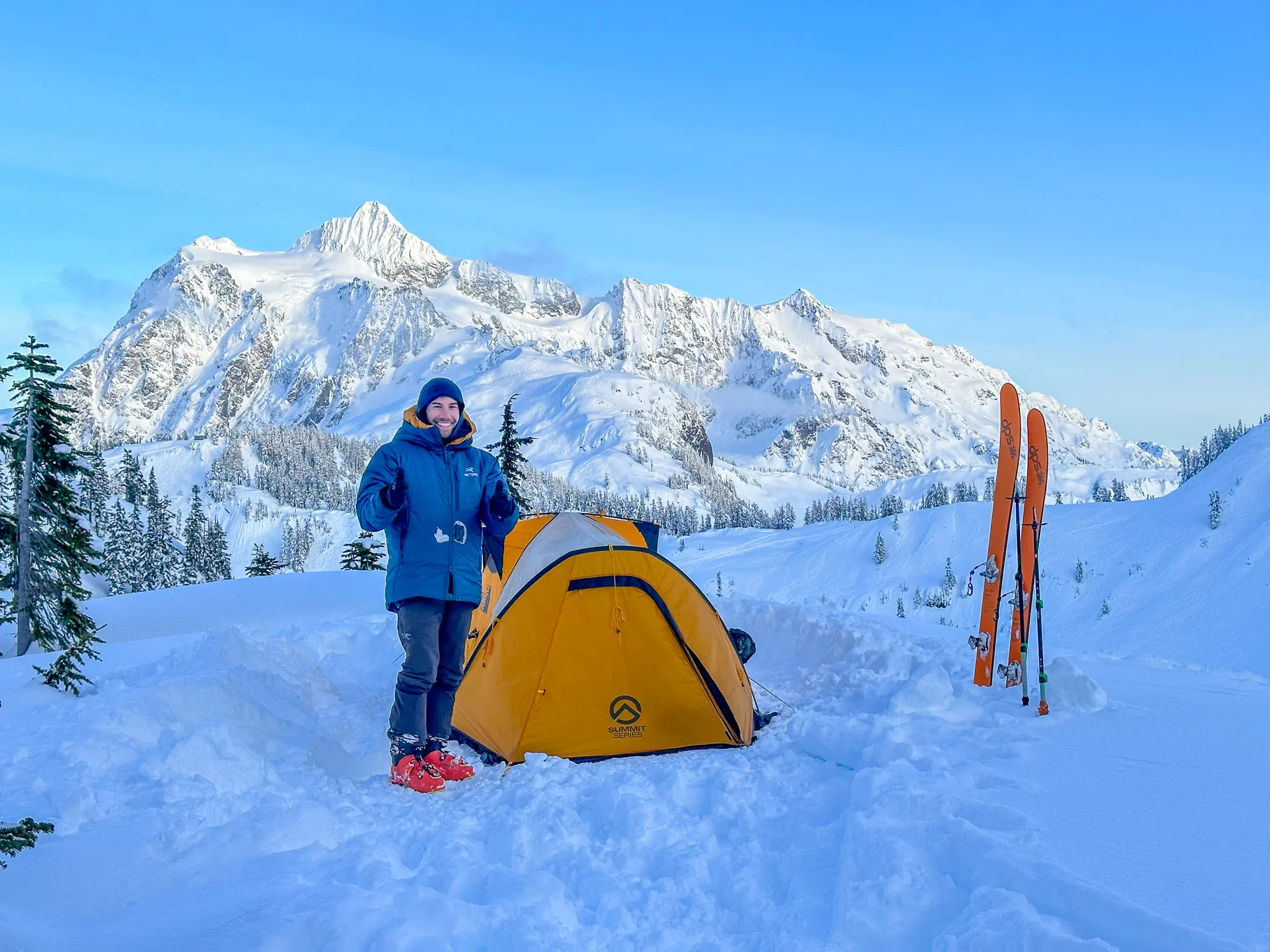



On the last day, temperatures dropped to single digits, and strong winds blasted around the recently fallen snow. The sobering reminder that our equipment is what keeps us alive in these serious and relentless mountains crossed my mind. I’m extremely picky about my gear, and for good reason. Rip a tent in these conditions, and you’ll be in for a rude awakening.
At $800, The North Face Assault 2 sits in the middle of the market in comparison to other four-season mountaineering tents, and is fairly reliable. Similarly, the weight range is also around average.
Slightly heavier than a true bivy tent and slightly lighter than a large expedition tent with features of both styles makes the Assault 2 versatile, and a strong contender for best middle-of-the-road high-performance tent.
The Assault 2 is an ideal tent for missions requiring back-to-back days in cold severe weather conditions where weight is also a significant factor. This tent would perform well both for huge mountaineering routes in the greater ranges, and for a few-day winter ascent of Mt. Baker and similar mountains.
